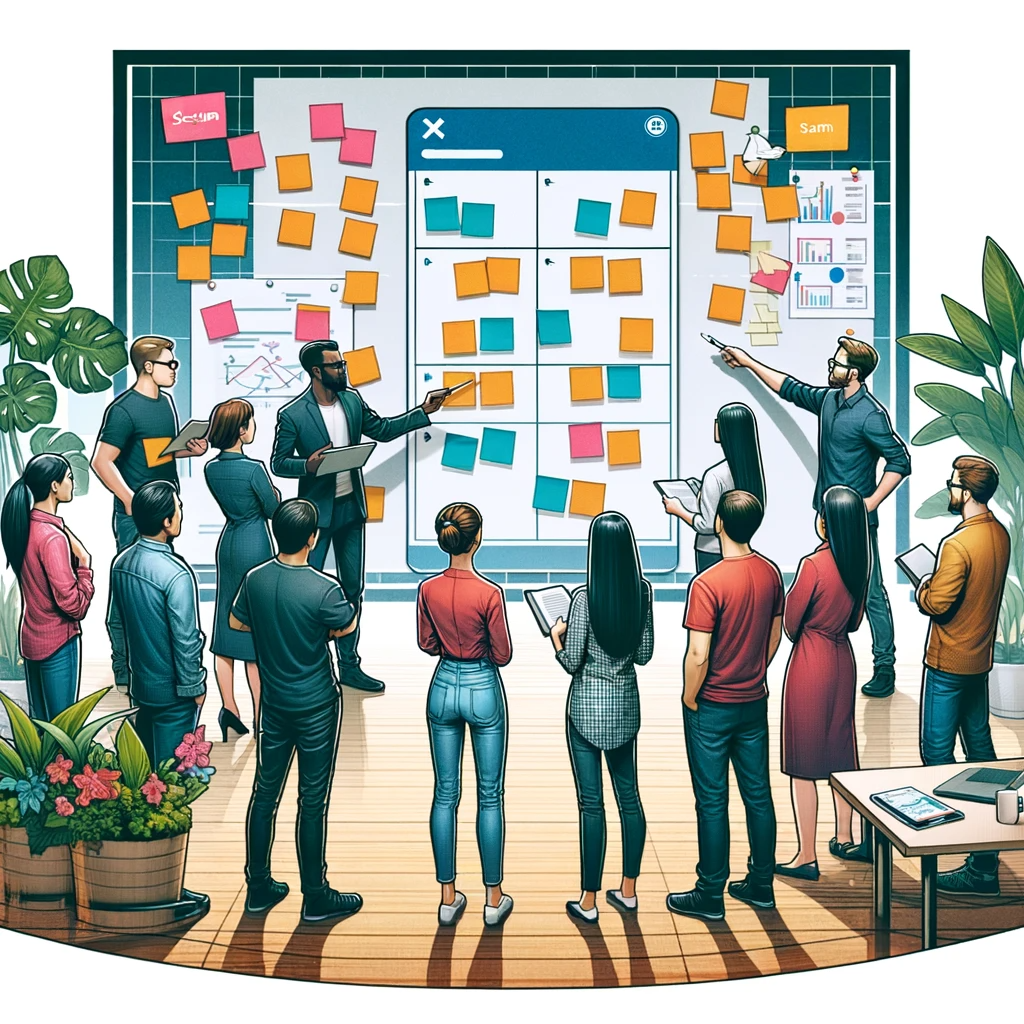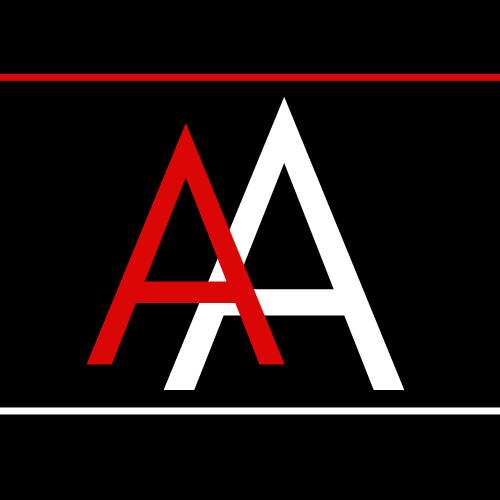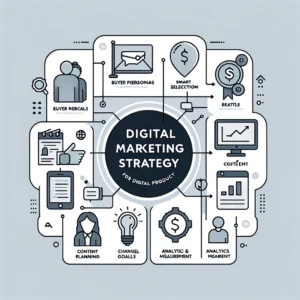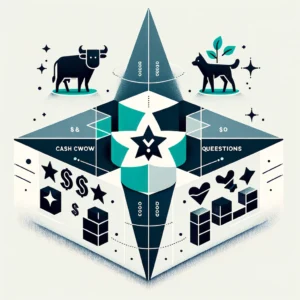Agile Product Development has revolutionized the way products are conceptualized, developed, and delivered. At its core, Agile methodology is a response to the dynamic nature of product development, emphasizing adaptability, customer satisfaction, and iterative progress. For those with a basic understanding, diving deeper into Agile offers insights into more effective and responsive product development strategies. This article aims to expand your Agile toolkit, enhancing your understanding and application of this versatile methodology in the realm of product development.

Agile Fundamentals Revisited
Key Principles of Agile Product Development
Even for those familiar with Agile, revisiting its key principles is crucial for a deeper understanding. Agile product development is anchored in values such as:
- Customer-Centric Approach: Agile prioritizes customer needs and feedback, ensuring the final product truly resonates with its intended audience.
- Embracing Change: Agile is about being receptive to changes, even late in the development cycle, to deliver the most relevant product.
- Incremental Delivery: Products are developed in small, manageable increments, allowing for regular feedback and adjustments.
- Collaborative Effort: Agile thrives on cross-functional collaboration, breaking down silos for a more unified approach to development.
Understanding these principles in the context of intermediate-level knowledge paves the way for mastering advanced Agile techniques.
Agile Frameworks: Scrum, Kanban, and Hybrid Models
At the intermediate level, it’s crucial to explore the different Agile frameworks:
- Scrum: A popular framework that organizes work into time-boxed iterations called sprints, typically lasting two to four weeks. It’s ideal for projects requiring rapid adjustments and frequent reassessments.
- Kanban: A more flexible framework focusing on continuous delivery and real-time prioritization of tasks. Kanban boards visually track progress, making it easier to manage workflows.
- Hybrid Models: Combining elements of traditional and Agile approaches, hybrid models cater to projects needing a structured yet flexible methodology.
Understanding these frameworks and their applications can significantly enhance the effectiveness of Agile product development.
Advanced Agile Product Development Techniques

Effective Sprint Planning and Execution
Sprint planning is a critical component of Agile product development, especially in the Scrum framework. To take your planning to the next level, consider the following advanced techniques:
- Capacity Planning: Understand the team’s capacity to avoid overcommitment and ensure realistic sprint goals.
- Prioritization Techniques: Utilize methods like MoSCoW (Must have, Should have, Could have, Won’t have this time) to prioritize tasks effectively.
- Sprint Reviews and Retrospectives: Use these meetings not just for feedback, but also for actionable improvements in future sprints.
Effective sprint execution requires a balance between rigor and flexibility, ensuring that the team can adapt to changes without losing sight of the sprint goals.
User Stories and Backlog Refinement for Product Success
User stories are the backbone of Agile product development. They should be:
- Concise and Clear: User stories must be easily understandable, focusing on user needs.
- Testable and Achievable: Ensure that stories are realistic and verifiable.
- Iteratively Refined: Regularly refine your backlog to keep it aligned with project goals and user needs.
Backlog refinement is an ongoing process, essential for maintaining the relevancy and priority of user stories. It involves regular review and prioritization to ensure that the team is always working on the most valuable tasks.
Agile Team Dynamics and Roles
Building and Managing Cross-Functional Teams
Agile teams are typically cross-functional, comprising members with varied skills. Key considerations for building effective Agile teams include:
- Diverse Skill Sets: Ensure a mix of skills relevant to the project needs.
- Team Autonomy: Empower teams to make decisions, fostering a sense of ownership and responsibility.
- Communication and Collaboration: Encourage open communication and collaboration within the team to enhance problem-solving and innovation.
The Role of the Scrum Master and Product Owner in Agile
In Agile, particularly Scrum, the Scrum Master and Product Owner play pivotal roles:
- Scrum Master: Acts as a facilitator and coach, ensuring the team adheres to Agile principles and removes any impediments to progress.
- Product Owner: Responsible for defining the product vision, managing the product backlog, and ensuring that the team delivers value to the business.
Understanding these roles and their interaction is crucial for the smooth functioning of Agile teams.
Agile Product Development Tools and Technologies
Software and Tools for Agile Development
Agile product development is significantly enhanced by the right set of tools. Key tools include:
- Project Management Tools: Applications like Jira, Trello, and Asana offer features for sprint planning, user story management, and progress tracking.
- Collaboration Platforms: Tools like Slack and Microsoft Teams facilitate communication and collaboration among team members.
- Continuous Integration/Continuous Deployment (CI/CD) Tools: Platforms like Jenkins and GitLab support DevOps practices, crucial for Agile environments.
Selecting the right tools that align with your team’s workflow and project requirements is essential for maximizing the efficiency of Agile practices.
Integrating DevOps with Agile Practices
DevOps and Agile are complementary, with DevOps focusing on the automation of software delivery processes. Key aspects include:
- Automated Testing: Ensures code quality and speeds up the development process.
- Continuous Integration and Deployment: Enables frequent and reliable code releases.
- Monitoring and Feedback Loops: Critical for maintaining the performance and health of applications in real-time.
Integrating DevOps with Agile helps in creating a more streamlined, efficient, and responsive product development lifecycle.
Overcoming Common Agile Challenges
Navigating Complex Projects in Agile
Agile is often challenged by the complexities of large-scale projects. Strategies to manage such complexities include:
- Scaling Frameworks: Frameworks like SAFe (Scaled Agile Framework) and LeSS (Large Scale Scrum) provide structures for applying Agile at scale.
- Decomposition of Tasks: Breaking down complex tasks into smaller, manageable parts helps in maintaining focus and agility.
- Risk Management: Proactively identifying and addressing risks is crucial for the success of complex Agile projects.
Balancing Flexibility and Structure in Agile Environments
While Agile is known for its flexibility, maintaining a balance with structure is vital. This includes:
- Clear Guidelines and Boundaries: Establishing clear process guidelines helps in maintaining order without compromising agility.
- Regular Inspections and Adaptations: Iterative reviews and adaptations help in staying aligned with project goals while being flexible to changes.
Case Studies and Real-World Examples
Successful Agile Product Development Stories
- Sony: Sony implemented Agile methodology, particularly the Scrum approach, in complex projects with high risks. This approach supported the establishment of a modern software development and project management process, enhancing their capability to handle intricate project contexts efficiently.
- LEGO: LEGO transformed its approach by converting 20 product teams into self-organizing Scrum teams. Initially facing challenges in team cooperation, LEGO adopted the SAFe (Scaled Agile Framework) structure, leading to significant improvements. Regular big-room planning sessions became a key part of their strategy, enhancing collaboration and risk management across teams.
- Siemens: At a Siemens Digital Factory, Agile was employed to develop software automation systems. The Agile methods proved ideal for addressing the company’s challenges, showing positive results within just two weeks of implementation. This approach fostered a culture of cooperation, experimentation, trust, and responsibility.
- CISCO: CISCO’s Agile implementation focused on a specific product, the Subscription Charging Platform. Utilizing the SAFe framework, they established daily meetings for alignment and work item determination, leading to improved team transparency and self-management.
- Google: Google has incorporated Agile methods, like Scrum, in various sectors for software development. A notable example is the development of Google AdWords using the Scrum methodology, demonstrating Agile’s versatility in handling diverse and complex projects.
More articles? Look here!
Conclusion: Embracing the Future with Agile Product Development
Agile product development, as exemplified by companies like Sony, LEGO, Siemens, CISCO, and Google, showcases the adaptability and effectiveness of Agile methodologies in diverse and complex project environments. From enhancing collaboration and efficiency to fostering a culture of innovation and responsibility, Agile has proven to be a transformative approach in the world of product development.
As we move forward, Agile is set to continue evolving, addressing new challenges and harnessing technological advancements. For practitioners at the intermediate level, staying informed about these developments and learning from both successes and failures in Agile implementation will be crucial. The future of product development lies in the ability to adapt, innovate, and deliver value, principles at the very heart of Agile methodology.
With this comprehensive overview, from fundamental concepts to advanced practices and real-world examples, intermediate practitioners are well-equipped to navigate the dynamic landscape of Agile product development, driving success in their projects and organizations.



